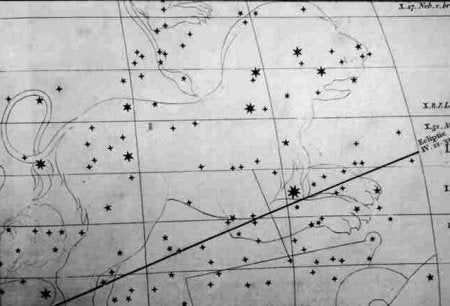
March 2004
The world's best-selling astronomy magazine offers you the most exciting, visually stunning, and timely coverage of the heavens above. Each monthly issue includes expert science reporting, vivid color photography, complete sky coverage, spot-on observing tips, informative telescope reviews, and much more! All this in an easy-to-understand, user-friendly style that's perfect for astronomers at any level.
Features
Black holes in the middle
Supermassive black holes with masses greater than a million suns dwell in most large galaxies. While astronomers know how black holes the size of a singer star form, how such behemonths form remains a mystery.
Cosmic snowstorm
It takes a billion billion snowflakes to make a comet and a billion comets to make a planet the size of Pluto; learn how snowstorms in space formed the icy bodies at the far reaches of our solar system.
Into the abyss
From the depths of the Mediterranean Sea, a new observatory hopes to see the fleeting light emitted when a neutrino strikes an atom. Ubiquitous yet nearly impossible to catch, neutrinos pose a challenge for any detector but, if caught, promise to open a new window on the universe.
M67: the Ultimate Survivor
Talk about “survival of the fittest.” While similar clusters have fallen prey to giant interstellar clouds, open star cluster M67 has a lifestyle and habitat that have kept it out of harm’s way for nearly 5 billion years.
Cancer, Leo, and Leo Minor
The final installment of our constellation-by-constellation observing series features the deep-sky splendor of the Crab, the Lion, and the Little Lion.
Disappearing act
Occultations are commonly predicted today, but that was not always the case. Meet David W. Dunham, the man responsible for the technique that enables people worldwide to observe these spectacular events.
Capturing aurorae
Skyshooting is easy when you follow these tips from an expert. See how you can capture auroral displays, one of nature’s most beautiful phenomena, using only a camera and tripod.
TAL’s 150K and 200K
TAL’s new telescope models, the 150K and 200K, are ready-to-observe systems based on a seldom used optical design. Is one of these scopes right for you?
Departments
This month in Astronomy
Beautiful universe
Letters
Bob Berman’s strange universe
Glenn Chaple’s observing basics
Interview
News
The sky this month
Ask Astro
New products
Book reviews
Coming events
Advertiser index
Resources
Reader gallery





